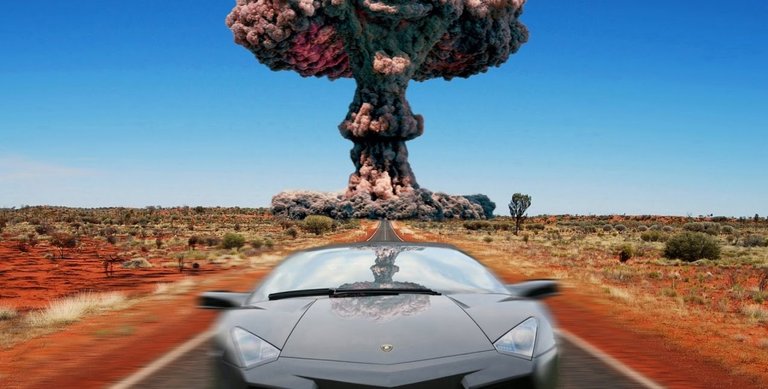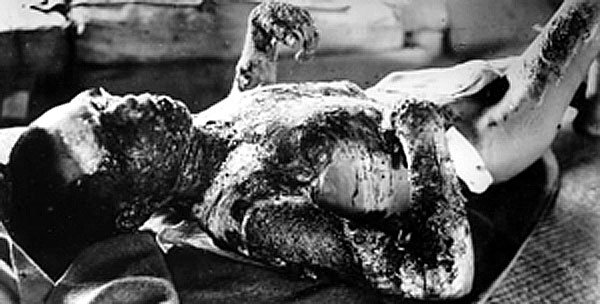1942
Three years after the splitting of the atom, and in the midst of WWII, the US launches a top secret military programme called 'The Manhattan Project'. The aim is to develop the first atomic bomb. The project lasts four years and costs about $1.8 billion (equivalent to $20 billion today)
In the New Mexico mountains three bombs are made - 'Gadget', a plutonium test model, 'Little Boy', a uranium bomb, and 'Fat Man', also made of plutonium.

1944
A second uranium reactor is built at Clinton, Tennessee, for manufacturing plutonium for an atomic bomb.
1945
70 Manhattan Project scientists write to US president Harry S Truman protesting against any use of the bomb and insisting on a demonstration of its power to Japan.
August 6,1945:
Truman orders Little Boy to be dropped on Hiroshima. It immediately kills 66,000 and injures 69,000. By the end of 1945 an estimated 155,200 more people have died due to radioactive fallout, and between 1946 and 1951 over 60,000 die from radiation-related illnesses.
Three days later Fat Man explodes over Nagasaki, instantly killing 39,000 and injuring over 25,000. By the end of 1945 an estimated 70,000 have died - either in the explosion or from radiation poisoning.

July 1,1946
The US begins nuclear weapons testing at Bikini Atoll in the Pacific. On July 24.1946, the Baker shot is set off in the Bikini lagoon at a depth of about 90 feet and with a yield of 21 kilotons. Two million tons of water are thrown up in the eruption, and two million yards of sediment are removed from the lagoon floor. Nine ships are sunk.
June 19,1948
The first Soviet plutonium production reactor becomes operational at Kyshtym in the Urals.
1949
The nuclear arms race begins with Truman announcing that the USSR has exploded its first atomic bomb. This is denied by the Soviets.
April 1950
The US begins open- air testing of DU in New Mexico.

November 1st 1952
Convinced the USSR would build an H-bomb, the US explodes 'Mike' - the first thermonuclear device. It completely vapourises the Pacific island of Elugelab, previously a mile in diameter. The blast was 1,000 times more powerful than Hiroshima.
To Be Continued
The post was compiled using material provided by historyguy.com en.wikipedia.org ornl.gov u-s-history.com atomicheritage.org ccnr.org scientificamerican.com wisconsinproject.orgAll images in the above post are either original from me, or taken from Google Image Search, filtered for the right of reuse and modification.
21
22
23
24
25
26
31
70
27
28
32
69
29
101
120
30
68
102
119
33
67
103
34
118
66
35
104
117
65
121
36
116
64
115
114
37
113
63
131
112
122
111
38
62
132
39
61
123
60